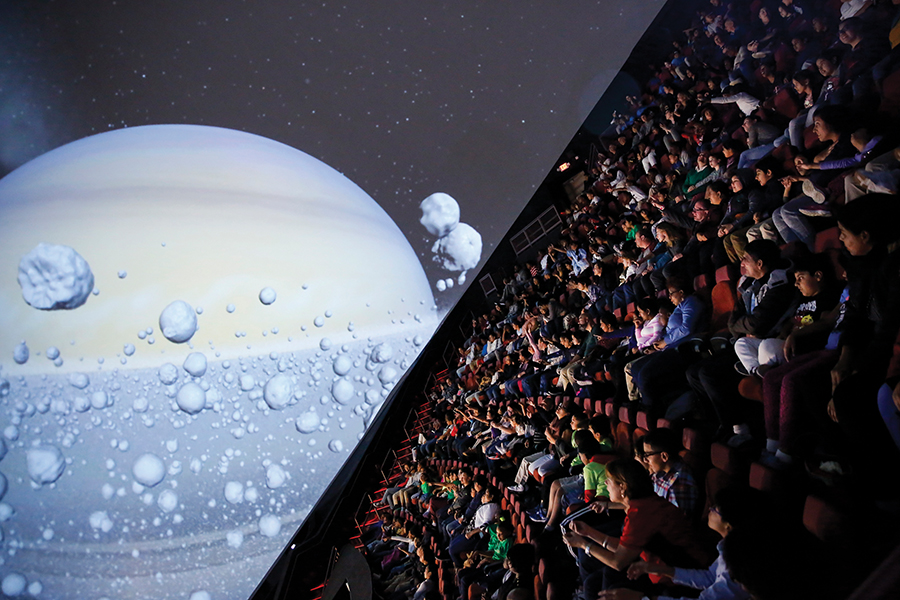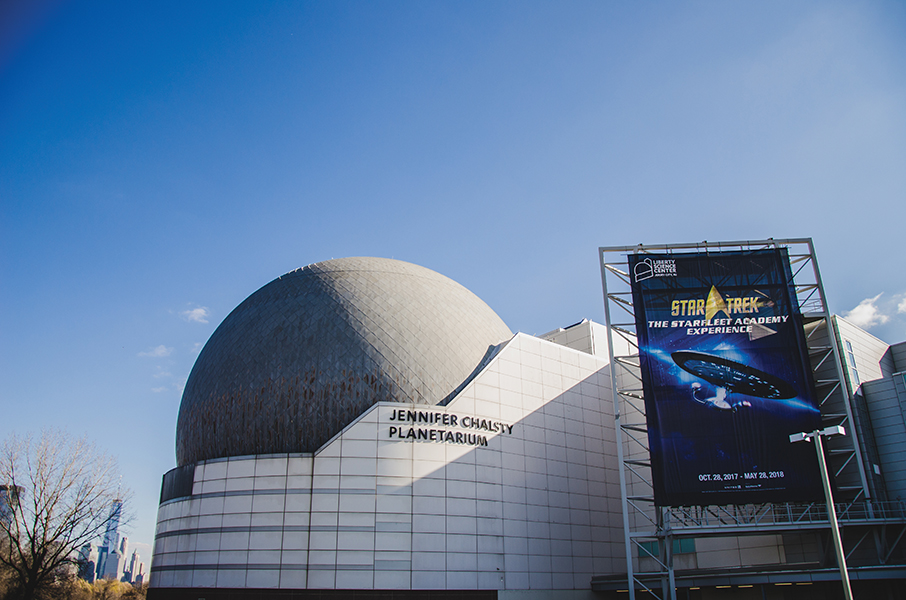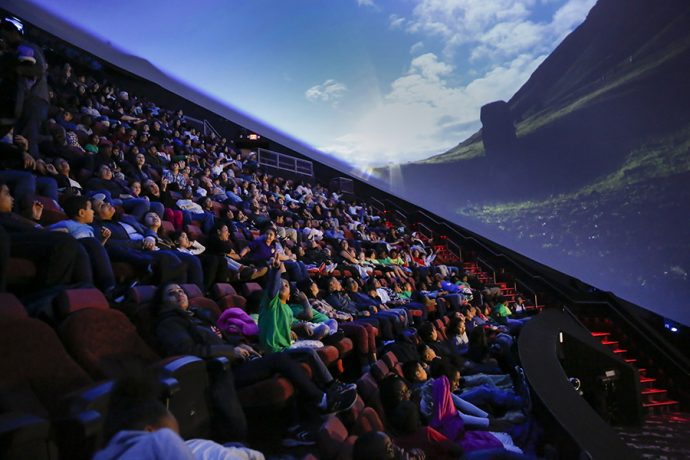Jersey City’s Liberty Science Center is now home to the largest and most technologically advanced planetarium in the Western Hemisphere, and that’s more than just a marketing boast.
“For planetariums, size really matters,” says Paul Hoffman, president and CEO of the Liberty Science Center.
A larger planetarium means an all-around better experience. More pixels create sharper views of stars and planets. Extra space offers more programming options.
“We can open a window on our screen the size of a flat-screen normal movie theater and video-conference in an astronomer, wherever she is, who has just made a major discovery, then open up another screen the size of a movie theater and show the images of what she found,” Hoffman says.
Furthermore, he adds, “we can open yet another screen the size of a movie theater and video in some other astronomers not involved in her work to comment on it.”
These possibilities are part of why Hoffman describes the new planetarium as such an incredible opportunity to teach astronomy to school groups and adult visitors alike. Each year, the 300,000-square-foot Liberty Science Center draws more than 650,000 visitors to its 12 museums, a live animal collection with 110 species, aquariums and other offerings in New Jersey’s Liberty State Park.
Its new planetarium, officially the Jennifer Chalsty Planetarium, opened Dec. 9. The project converted the science center’s IMAX dome theater to a planetarium. Chalsty, a New Jersey philanthropist and Liberty Science Center board member, donated $5 million to purchase the necessary hardware and software upgrades, replace the theater’s screen and refurbish its interior.

There are only three planetariums in the world larger than that of the Liberty Science Center, two in Japan and one in China. Indeed, any other planetarium in the Western Hemisphere would fit inside the Jennifer Chalsty planetarium, the Liberty Science Center notes in its announcement of the planetarium’s opening weekend.
The press materials on the new planetarium feature all kinds of colorful comparisons to give a sense of the planetarium’s monstrous scale. The planetarium dome has a diameter of about 89 feet, or 1.5 times the length of a bowling alley lane. Its 60-foot tall screen is the height of four giraffes. The domed screen’s 12,345-square-foot surface area is a “nice size four-bedroom, two-bathroom home.”
The planetarium’s twice daily live programming will feature a look at the night sky, with the ability to travel to and explore various parts of our solar system.
“We can show you, of course with more resolution than you can actually experience if you were standing in Jersey City, exactly everything in its position, and actually visit some of these,” Hoffman says.
In mid-December, for example, the live planetarium shows focused on “flying to Saturn,” he adds, as the gas giant would soon go out of view for a couple months.
“We’ll show you incredible Cassini images of Saturn’s rays that we’re taken as recently as September,” Hoffman says of the NASA mission that spent 13 years exploring the planet before purposely disintegrating into its atmosphere.
The planetarium’s live shows will be interactive as well, Hoffman says.

“If someone says ‘Wow, these images of Saturn’s rings from Cassini are really beautiful, what are the best images that scientists had before,’ the planetarium presenter will be able to pull up those other images of Saturn.”
The planetarium’s 10 digital projectors are connected to super-powered servers that can instantly display the latest images from satellites and other sources, all displayed in 8K (88-million pixel) resolution.
As well as responsive to the audience, the planetarium programming will be reactive to new scientific developments. For its opening weekend, The Liberty Science Center teamed up with the Space Telescope Science Institute to premier its new visualization of the Orion Nebula, based on thousands of images of from the Hubble telescope.
Even though it’s about 1,400 light-years away, the Orion Nebula is the nearest region of star formation to Earth. “It’s just a cauldron of new stars being born,” as Hoffman describes.
“One of the things we want to do in our planetarium is break astronomy news,” he adds. “This will be the first place that you’ll see it, or certainly the first place on the East Coast. In this case, it is the first place people have ever seen this. ”
The planetarium plans to make relationships with observatories around the world, NASA and other international space agencies and private industries going into space to ‘use our planetarium as a place to show off their work.’”
For more, visit lsc.org.




